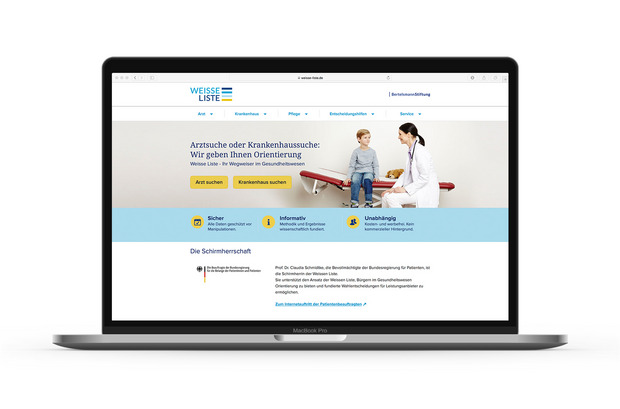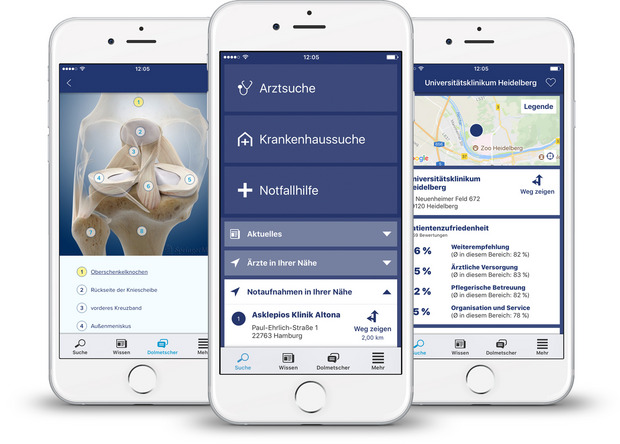Key findings from the impact analysis
- Public awareness: one in six online users is familiar with Weisse Liste, as are 90 percent of quality managers at clinics and 80 percent of doctors.
- Use: One million users visit Weisse Liste each month (an increase of approx. 300 percent since 2014)
- The recommendation rate is 74 percent among patients and 80 percent among patient consultants.
- 80 percent of users say their expectations were fulfilled.
- 50 percent of quality managers in hospitals use Weisse Liste..
- 37 percent of patients say that they have reconsidered their decision about a health-care provider after using Weisse Liste.
- The majority of health-care researchers and health insurance representatives say that Weisse Liste increases quality by promoting competition.
- The project’s success has been limited among the target group of doctors in private practice, who continue to exhibit low levels of acceptance for quality comparisons.
Result: Since its launch in 2008, the Weisse Liste project has undergone considerable further development and proven successful in a sometimes challenging environment.
![[Translate to English:] Ältere Dame mit Arzt](/fileadmin/files/_processed_/c/b/csm_230115_WeisseListe_1317_ST-VV_Original_68199_d86df31888.jpg)

![230115_WeisseListe_1878_ST-VV.jpg [Translate to English:] Patientin und Art im Krankenhaus](/fileadmin/files/_processed_/2/3/csm_230115_WeisseListe_1878_ST-VV_Original_76310_98a394c4fe.jpg)


